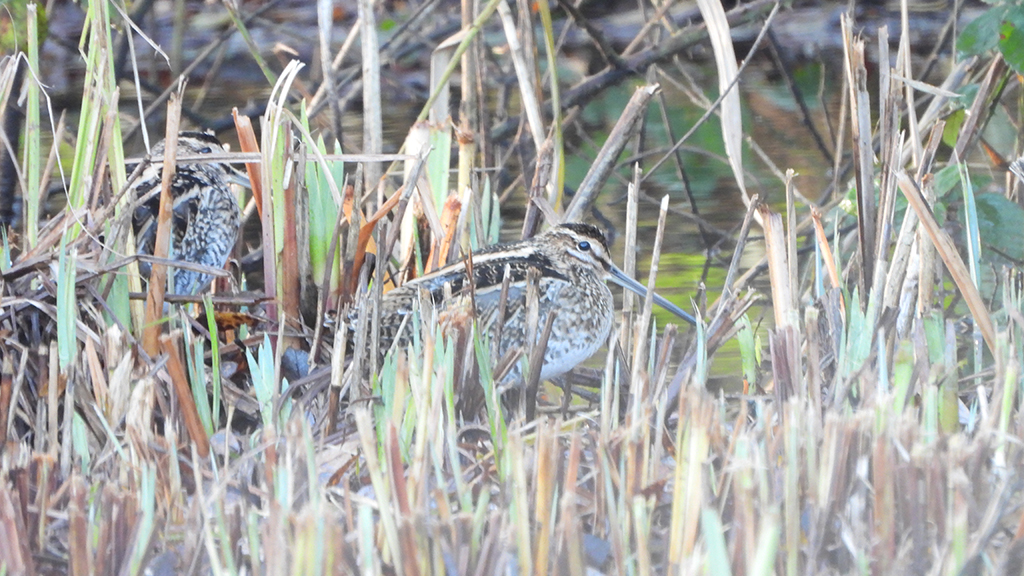Wildlife sightings for 6th November 2013
1 Bittern - main lake S shore
1 Yellow-legged Gull 1st winter - main lake
9 Snipe
2 Pintail - pair, scrape
85 Wigeon - marsh, scrape, sheltered lagoon
8 Water Rail - reedbeds
290 Starling - flew W
67 Goldfinch - wildside
6 Lesser Redpoll - wildside
6 Siskin - wildside
350 Wood Pigeon - flew S
4 Reed Bunting - including 2 that flew S
October bird highlights: Garganey, Pink-footed Goose, Great Skua, Bittern, Red Kite, Peregrine, Jack Snipe, Redshank, Water Pipit, Rock Pipit, Bearded Tit, Brambling, Mealy Redpoll, Lapland Bunting.
Early October has seen the first Bittern arrive, earlier than ever this year. It has been spotted twice in the middle reedbed channel.
The flooded grazing marsh continues to attract good numbers of wintering wildflowl. Recent counts have included 27 Snipe, 2 Jack Snipe, 100 Wigeon, 177 Shoveler, 150 Teal and 110 Gadwall.
Visible migration has recorded some early winter birds on the move such as Brambling, Siskin and Redpoll, as well as some scarcer species like Lapland Bunting and Water Pipit. The first Redwings appeared at the start of the month and since then there’s been daily counts of familiar passerines migrating across the skies in numbers (100+ Chaffinch, 50+ Meadow Pipits, 20+ Song Thrush, Skylarks, Wood Pigeons, Greenfinches, Goldfinches, etc). The last of the House Martins, Sand Martins and Swallows had mostly disappeared by the second week of the month, while there are still a few Chiffchaff and Blackcap to be found on the reserve (some quite likely to over-winter here as usual). The resident Cetti’s Warblers are as vocal as ever, their explosive call coming from the cover of dense shrubbery and bramble patches, or thick reedbed growth.
Check out any mixed flocks of Tits and Warblers for a possible rarity this month – a Yellow-browed Warbler or a Firecrest is a definite possibility this month, especially with a good easterly wind blowing!
Butterflies and other invertebrates: Brimstone, Red Admiral, Clouded Yellow, Speckled Wood. Dragonflies:- Migrant Hawker, Common Darter.
Water voles: the latest on-site population study has shown that all the water voles are in very good condition and the males are ranging quite some distance. The majority of captures were in the reedbed channels, despite there being signs of plenty of activity in the pools and meanders inside of Wildside (latrine sites, feeding sites and burrows).
Flowering plants: Self-heal, Cat’s-ear, Prickly Oxtongue, Common Knapweed, Yarrow, Red Dead-nettle, Michaelmas Daisy, Field Scabious, Devil’s Bit Scabious, Great Bird’s-foot Trefoil, Dandelion, Meadow Buttercup, Red Clover, White Clover, Figwort, Yellow Water-Lily, Fleabane.
Bats: (from the last two bat walks held at the centre) – Soprano Pipistrelle>Nathusius Pipistrelle, Daubenton’s, Leisler’s, Common Pipistrelle.



